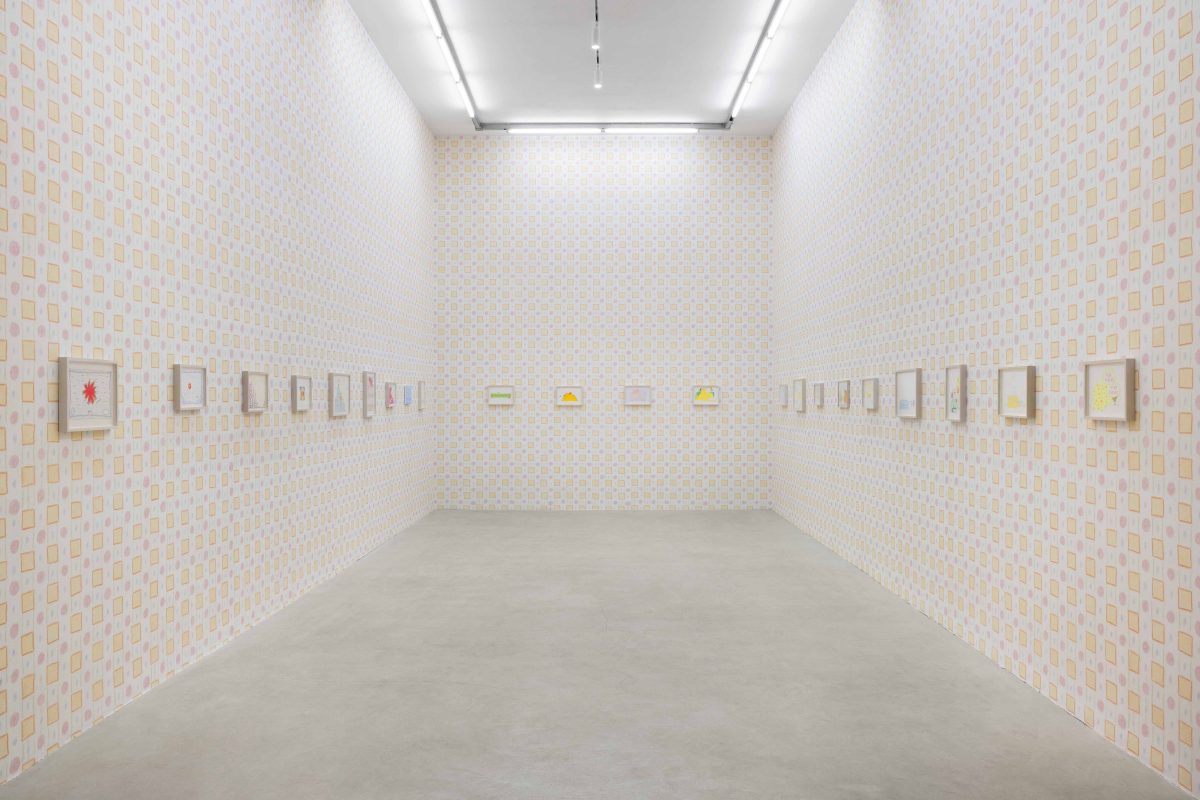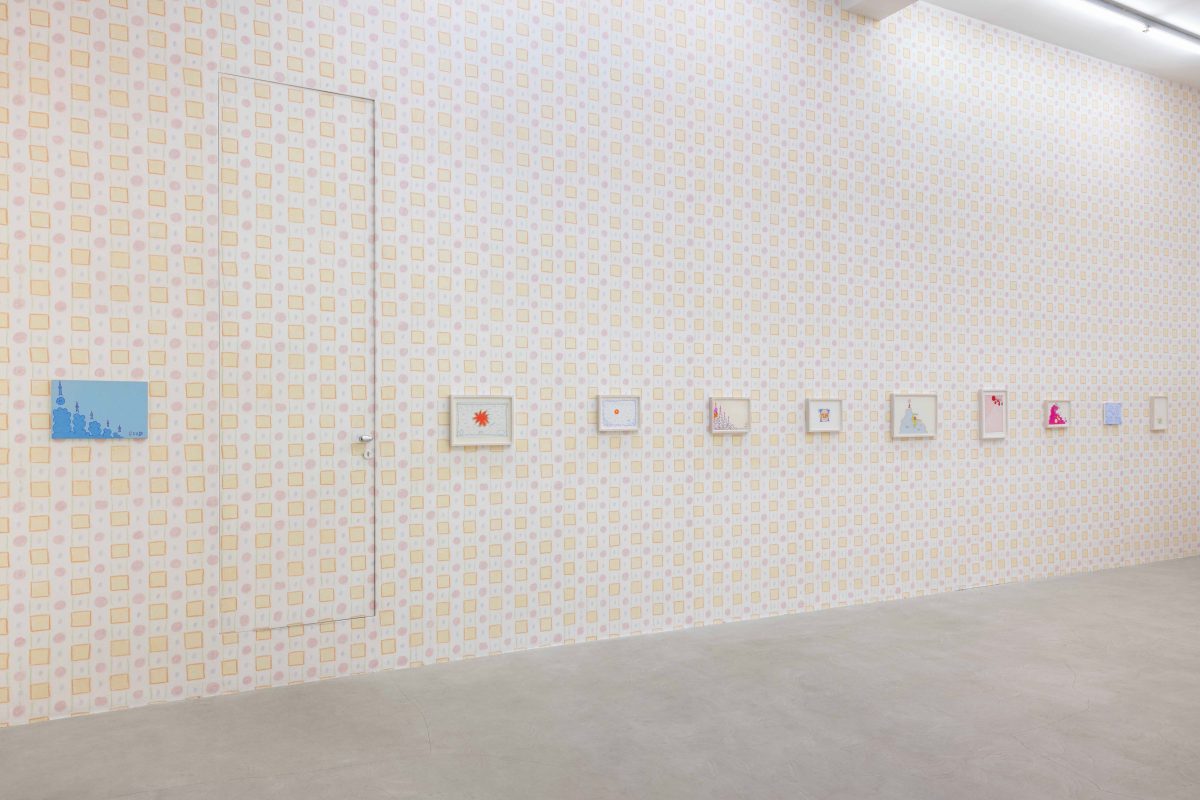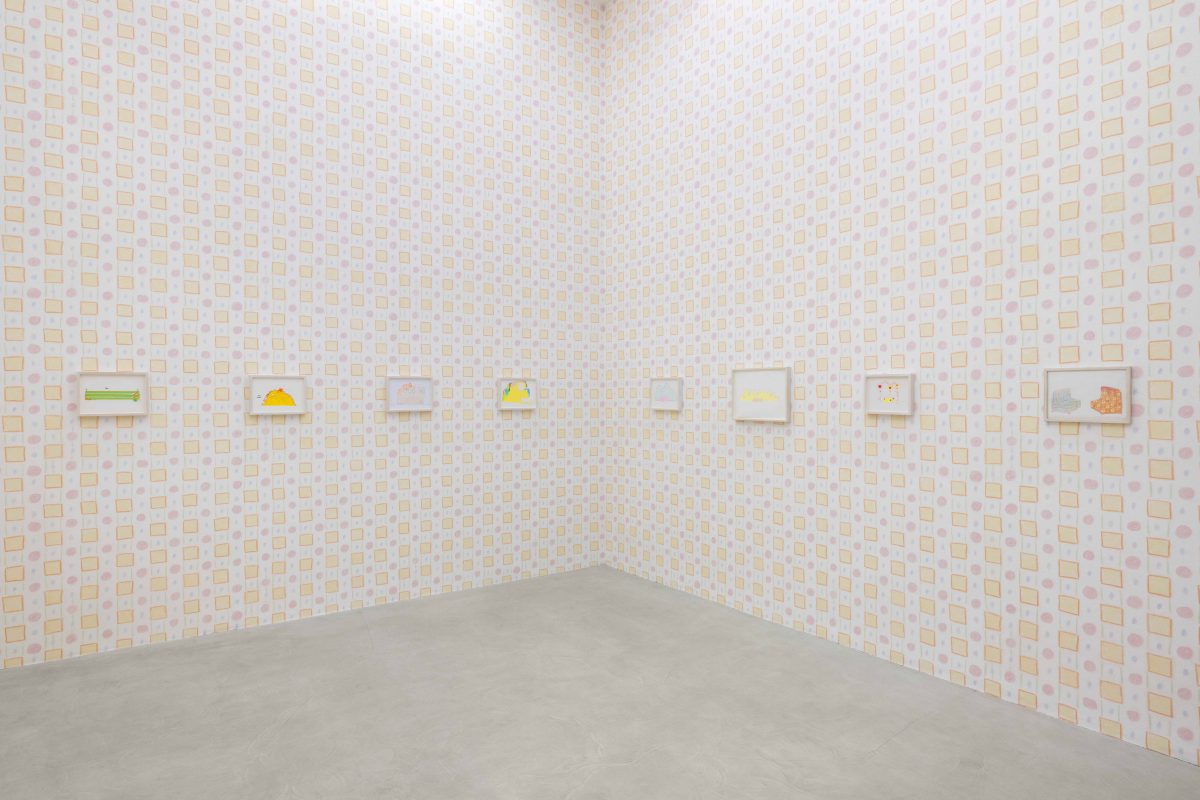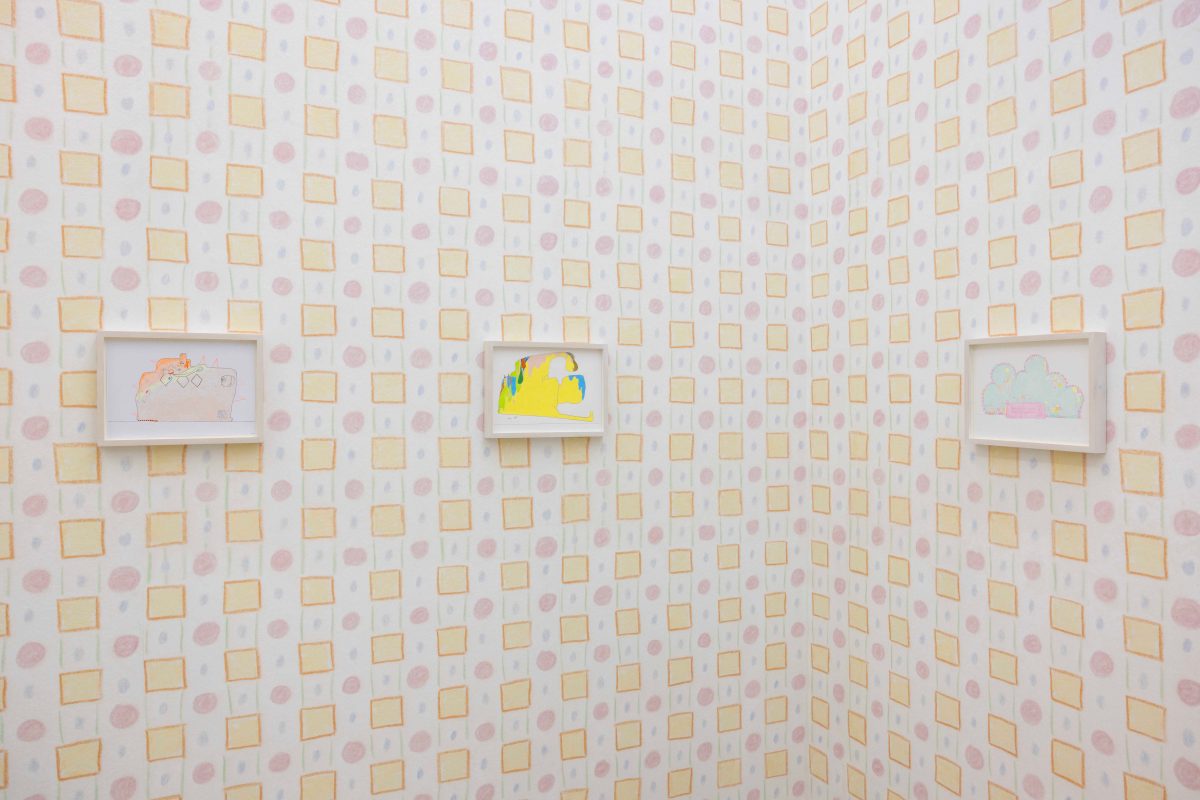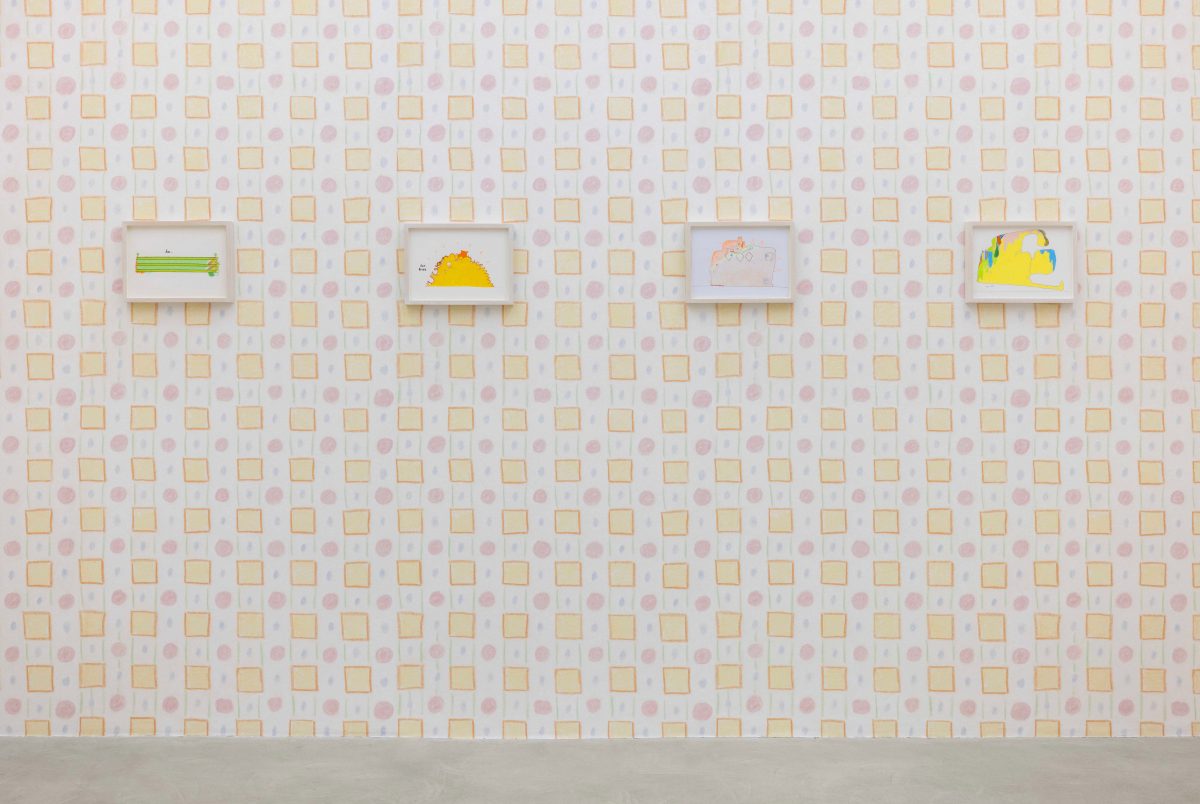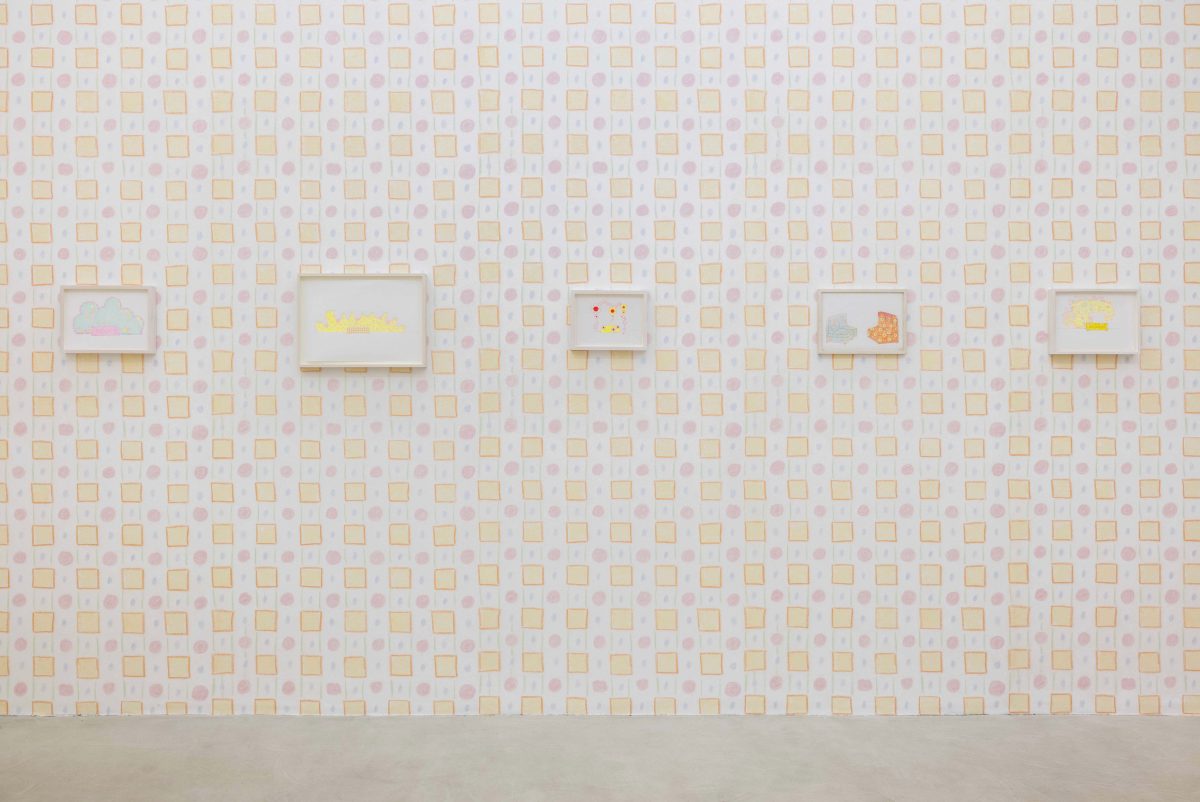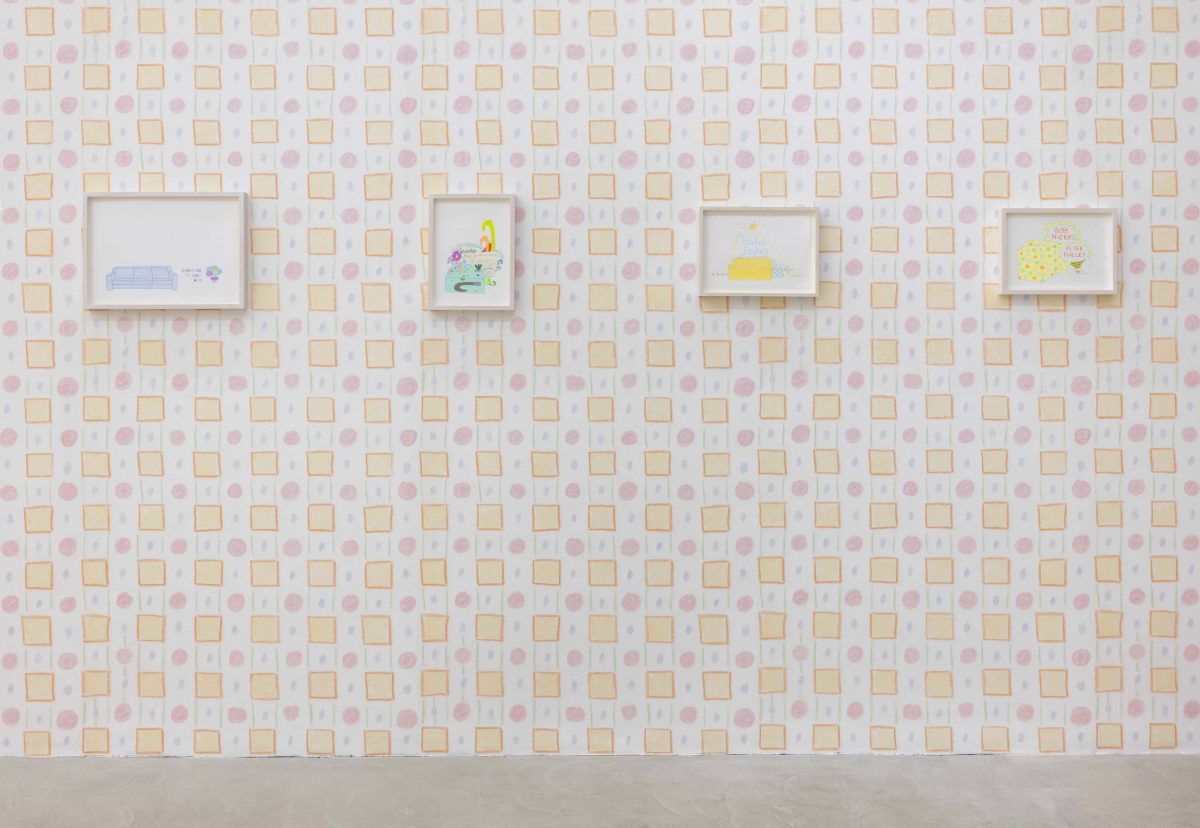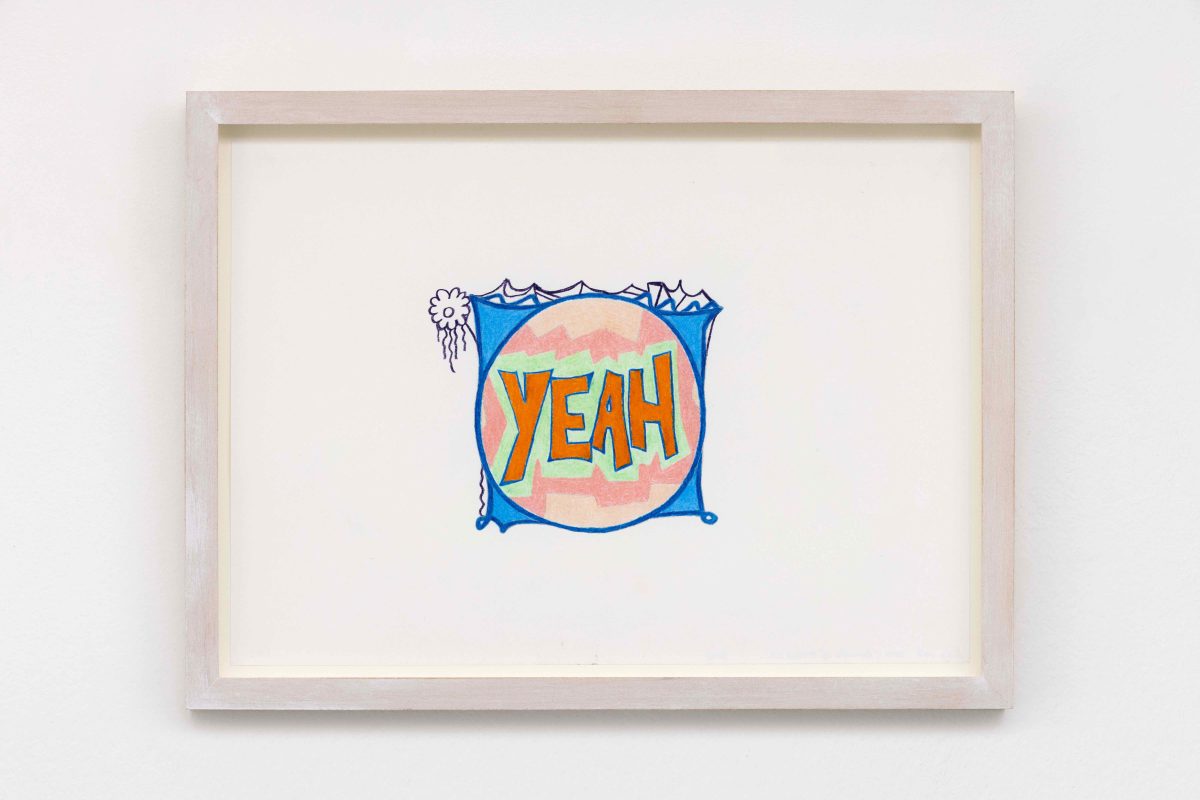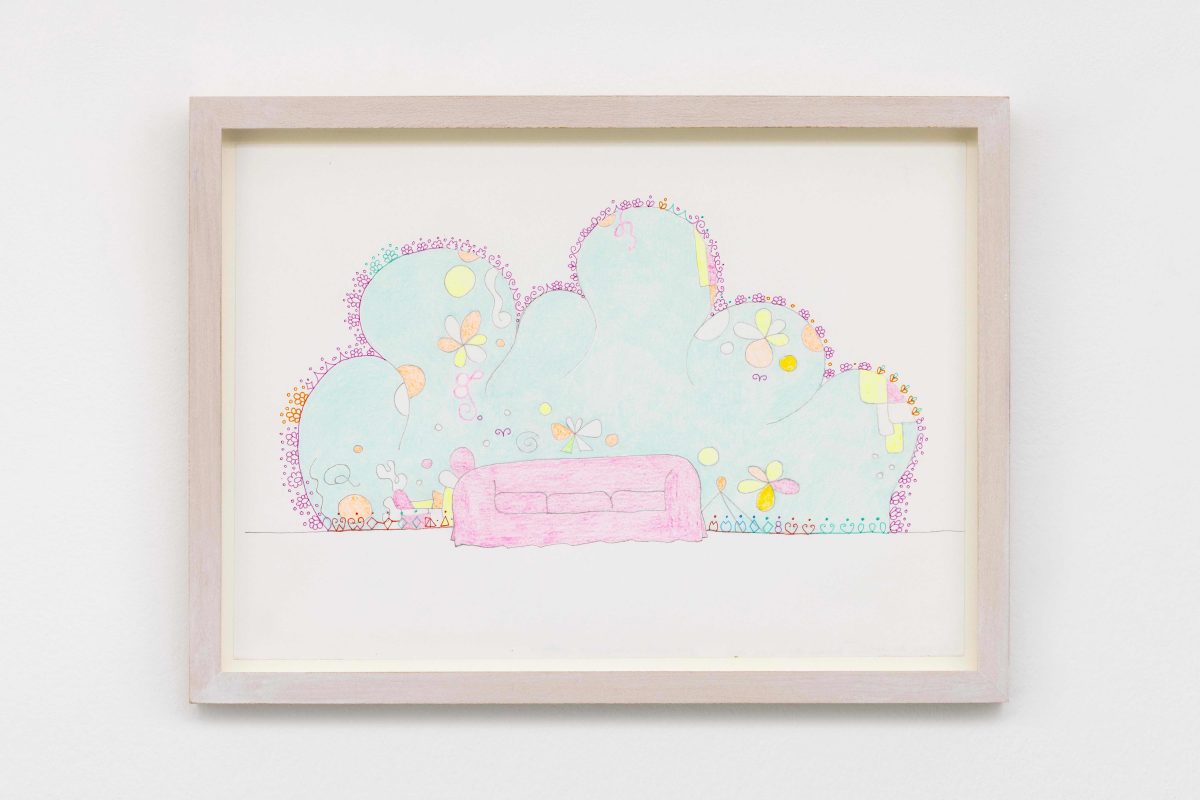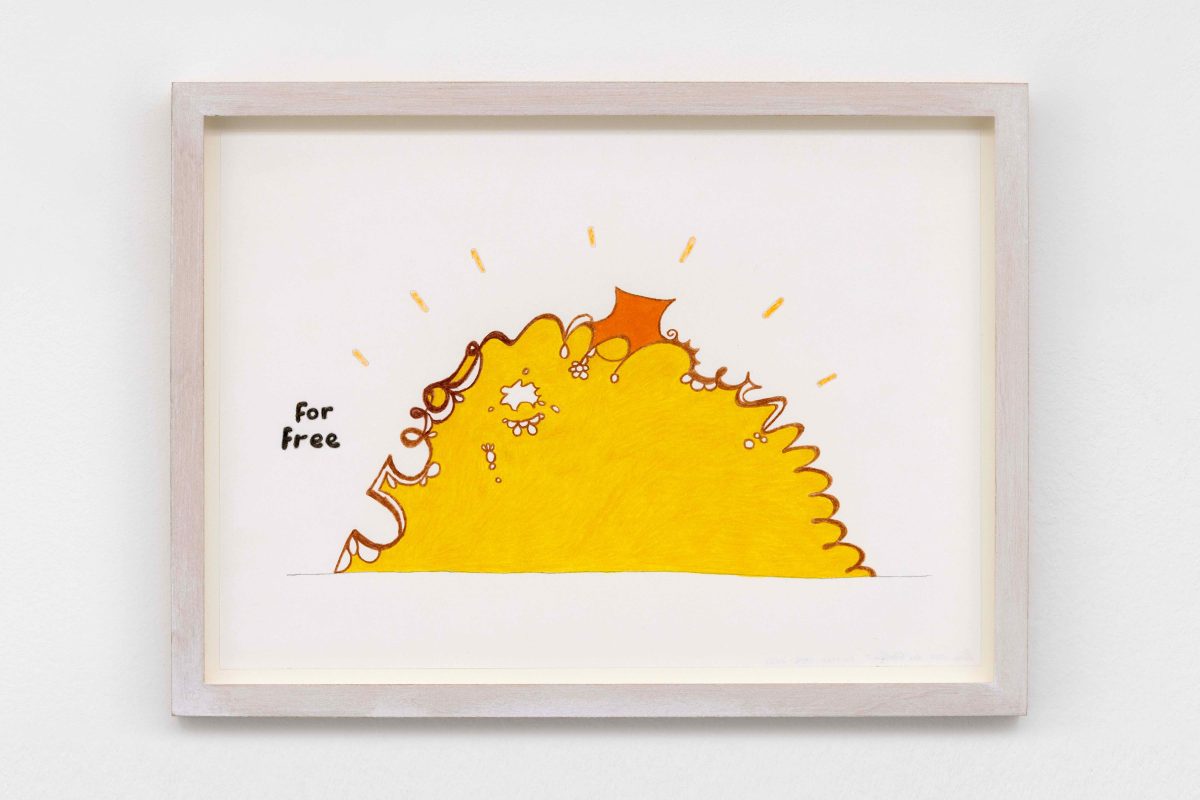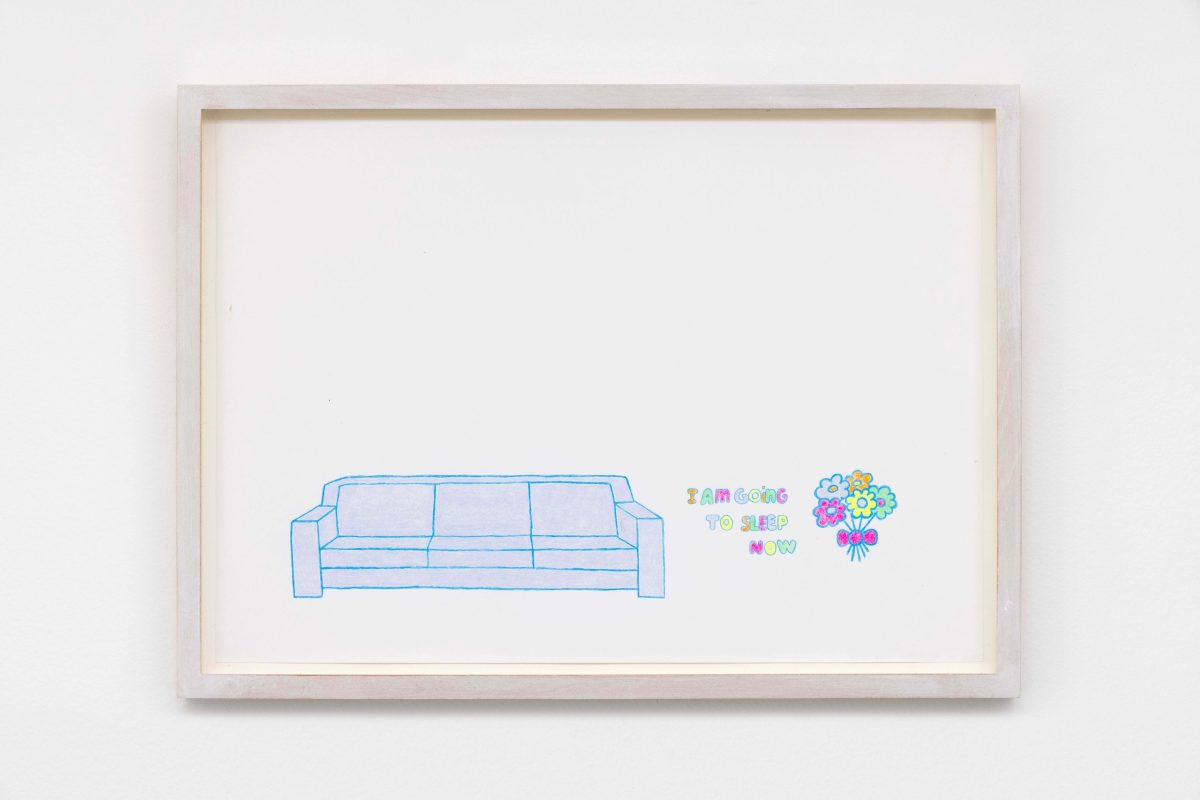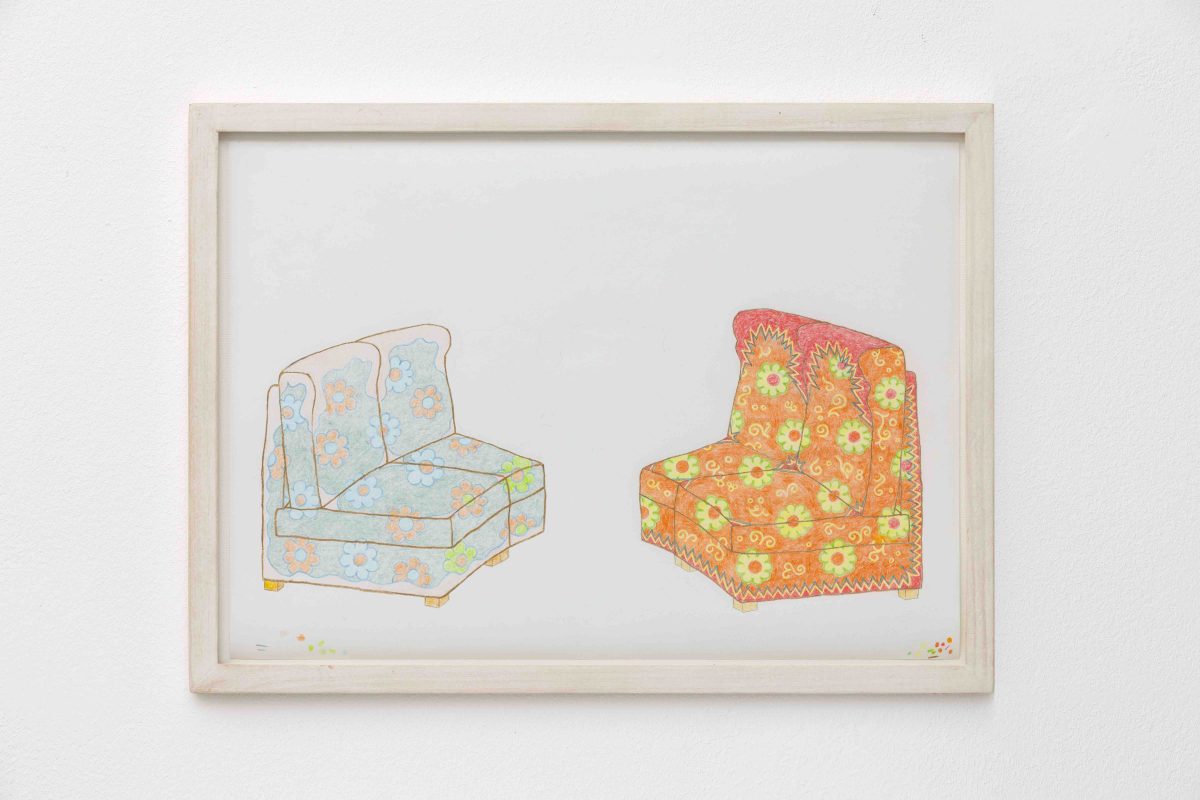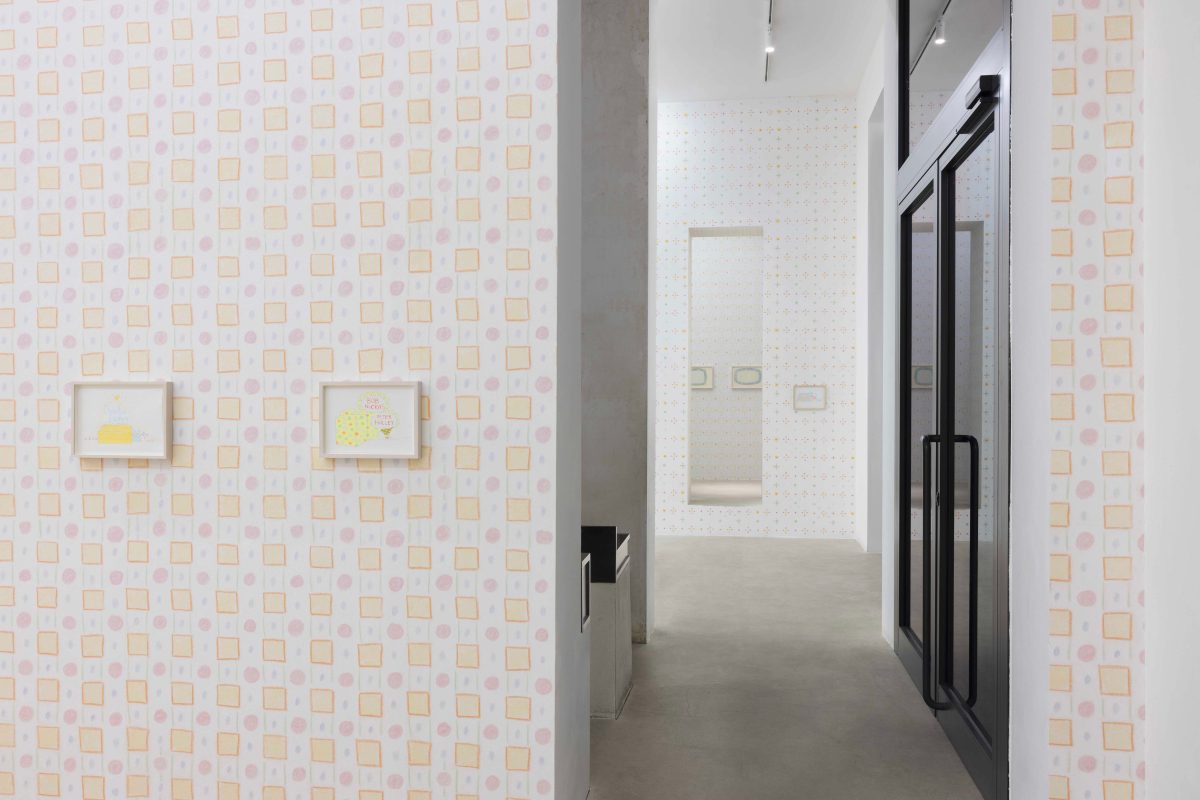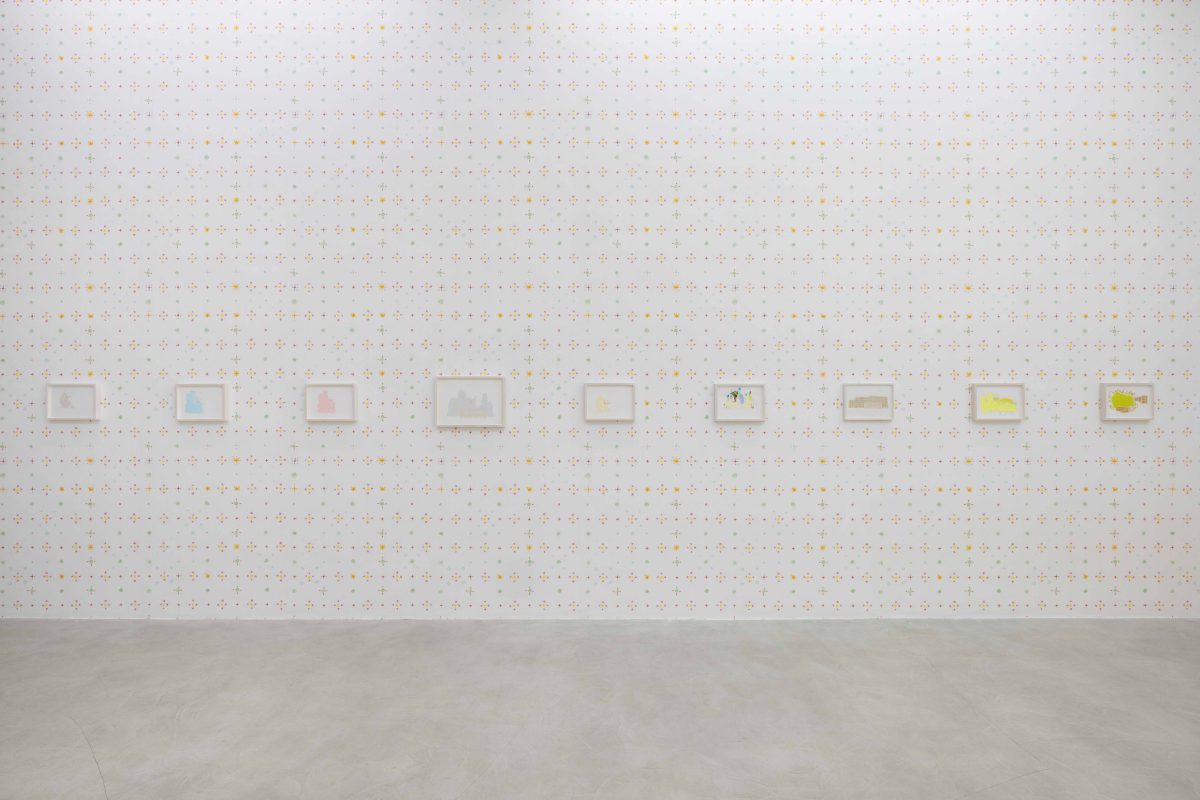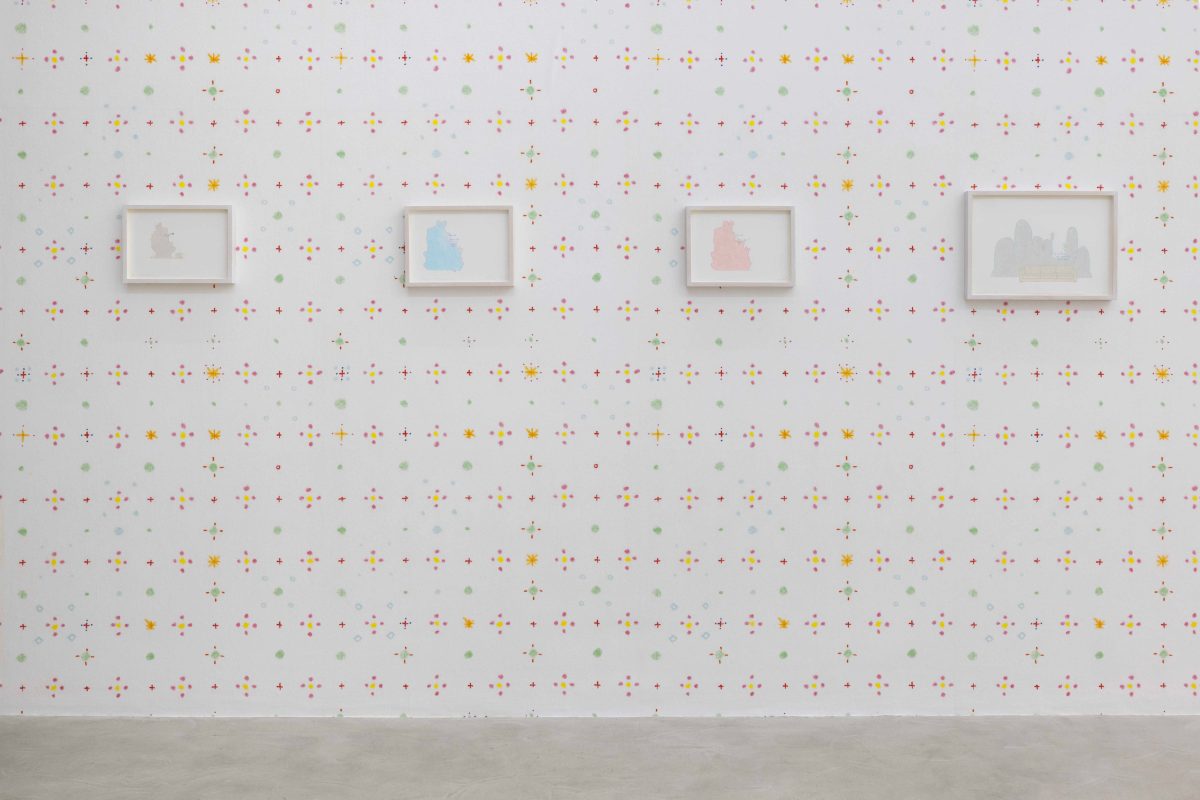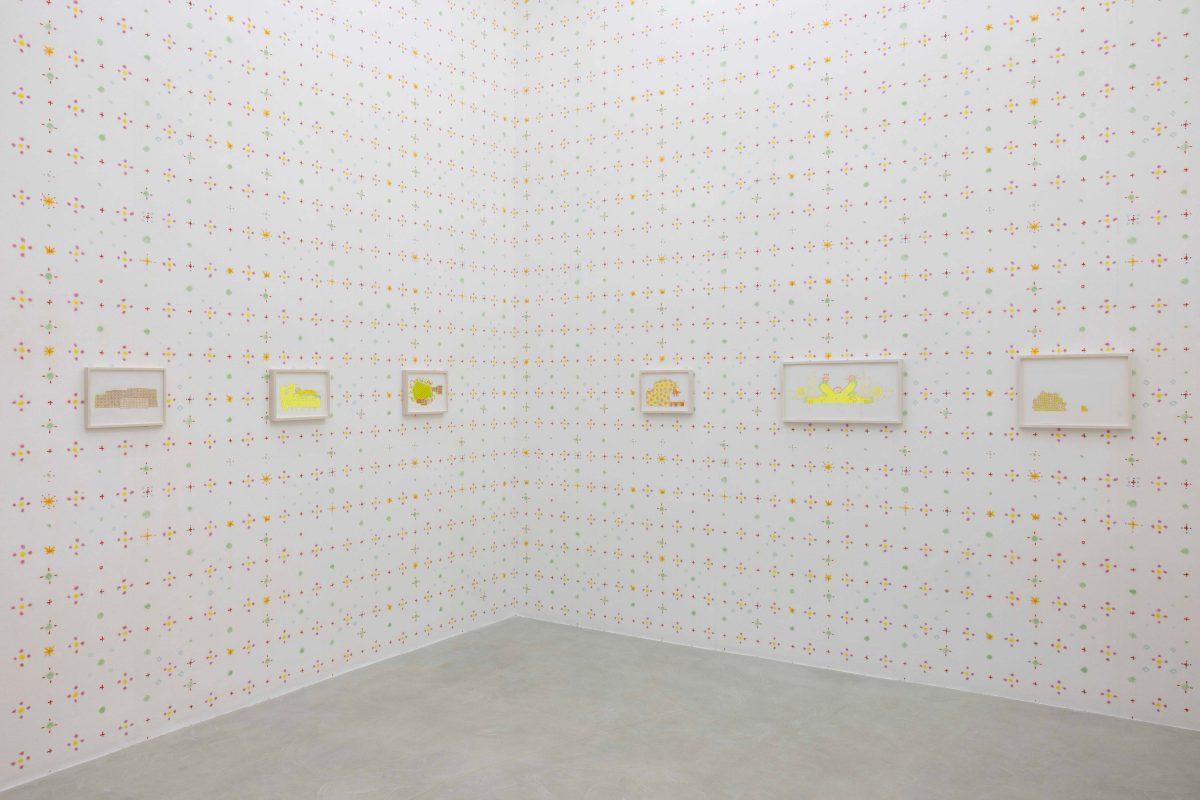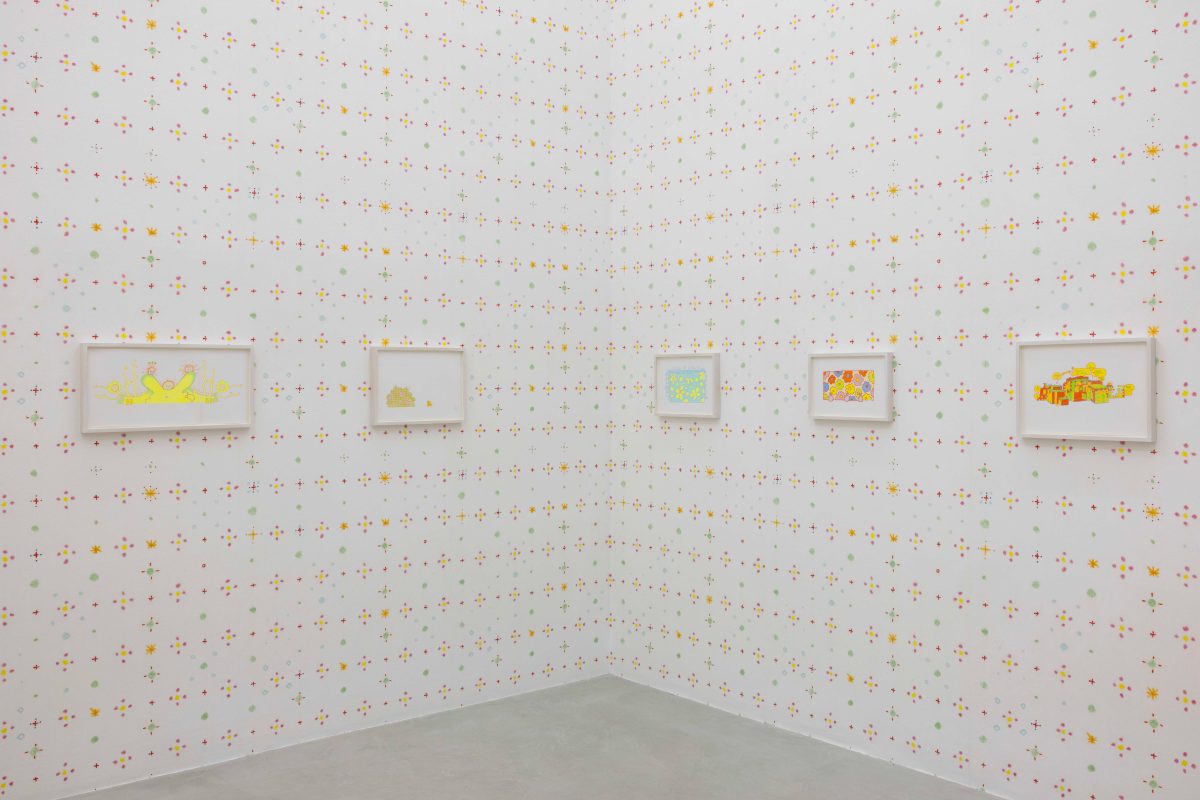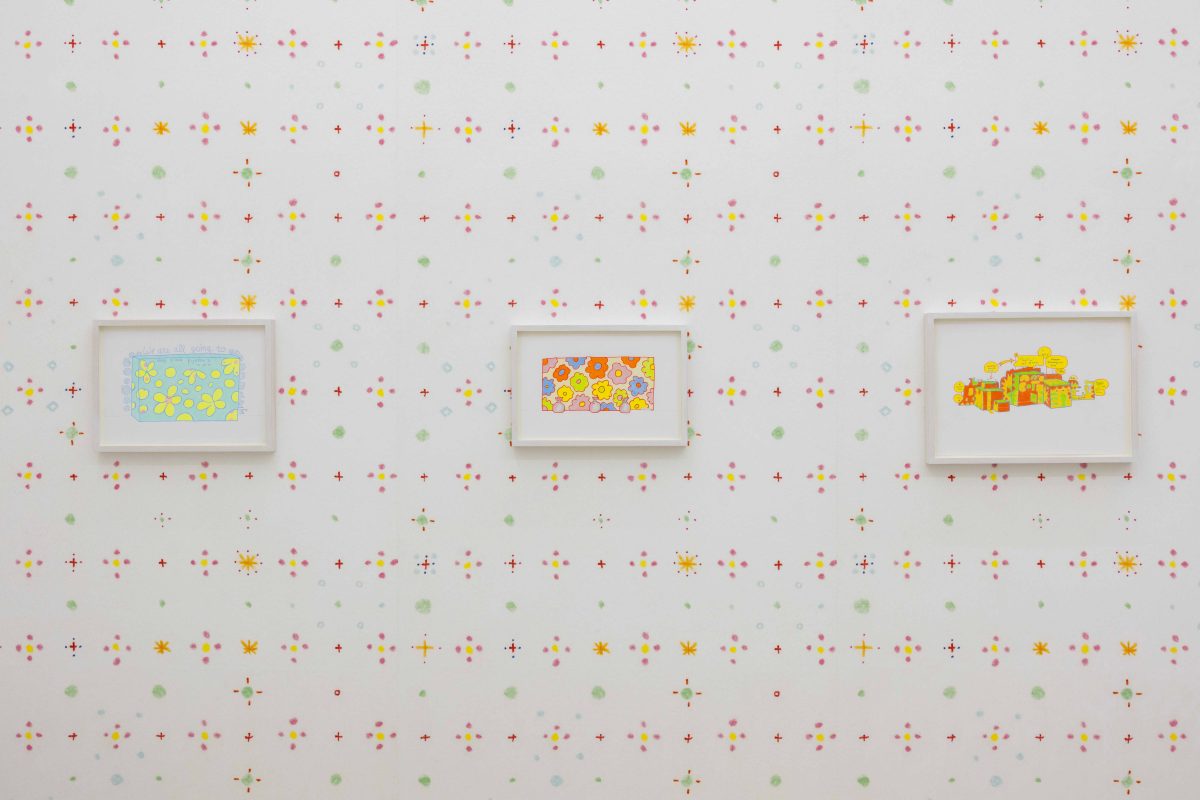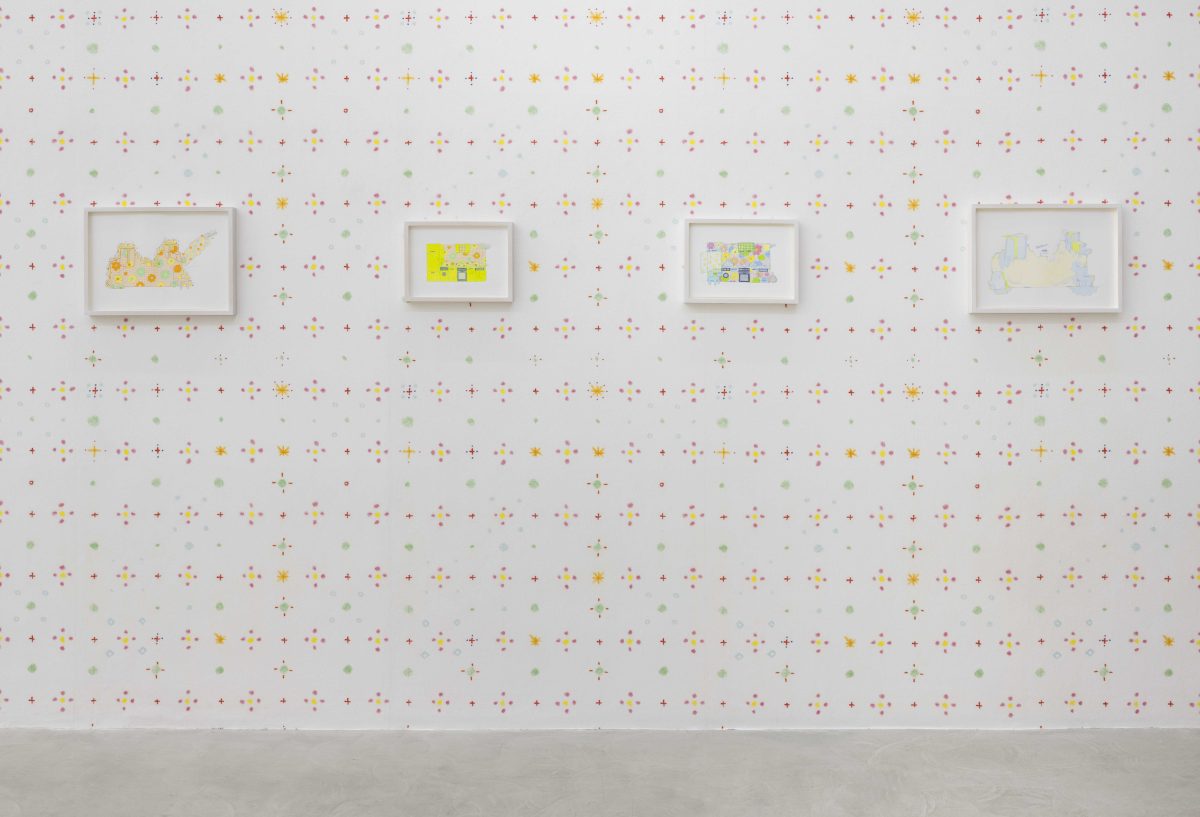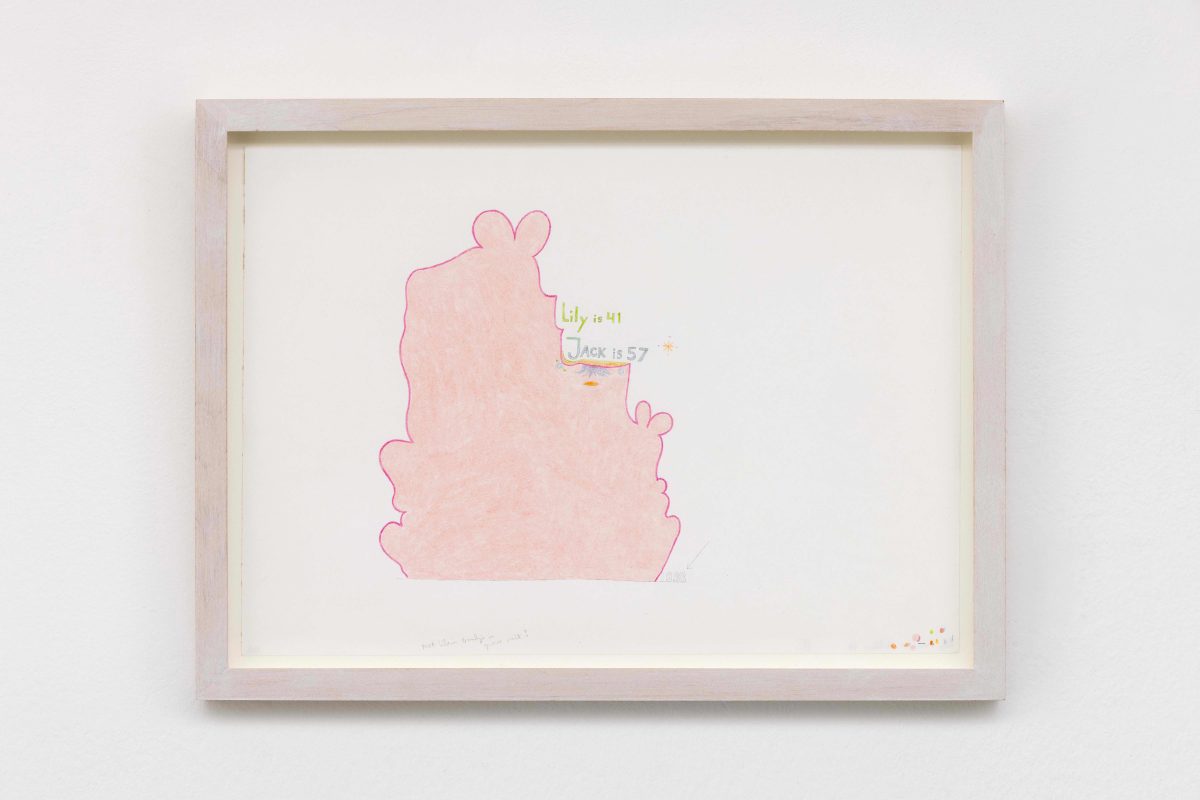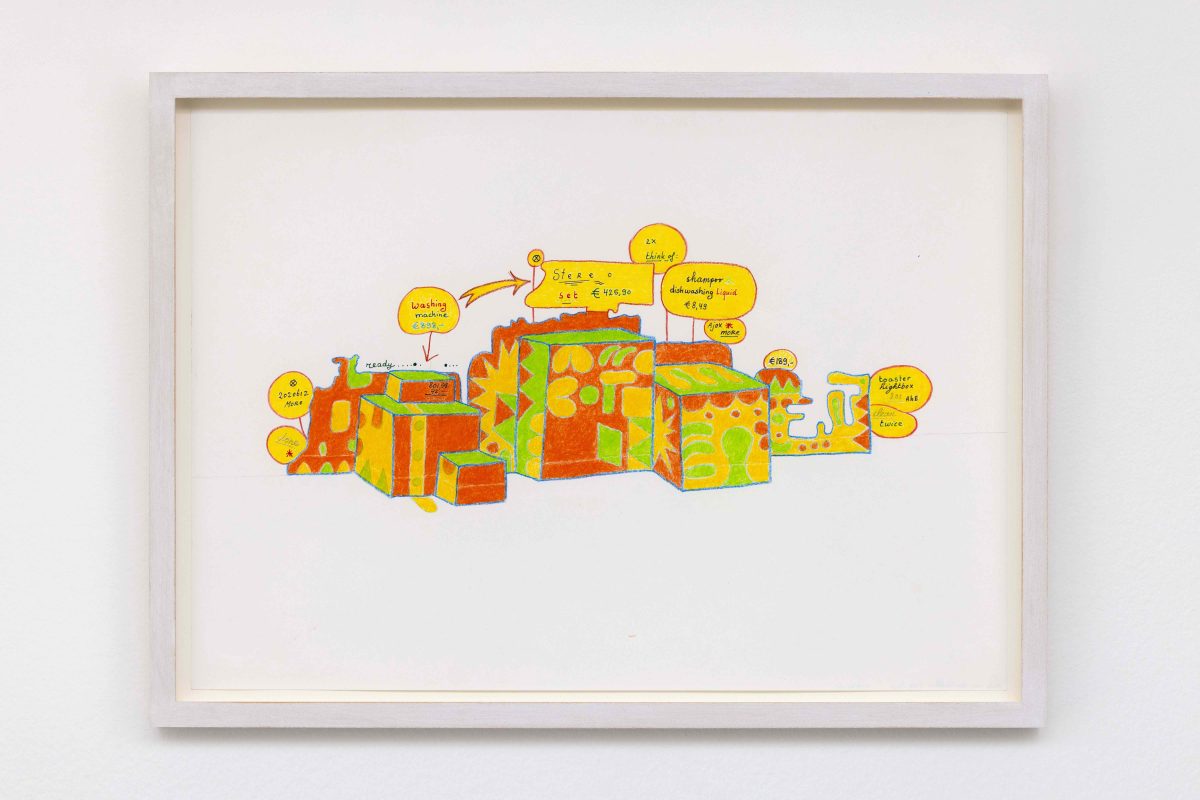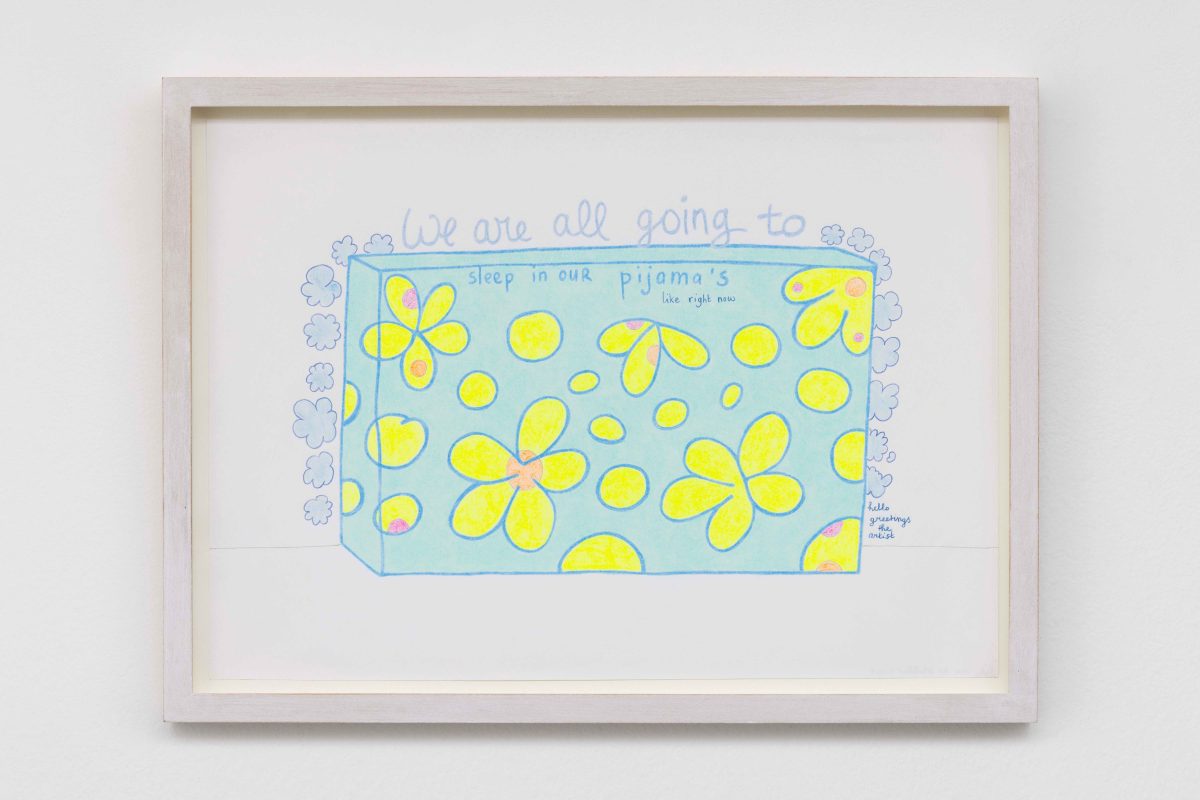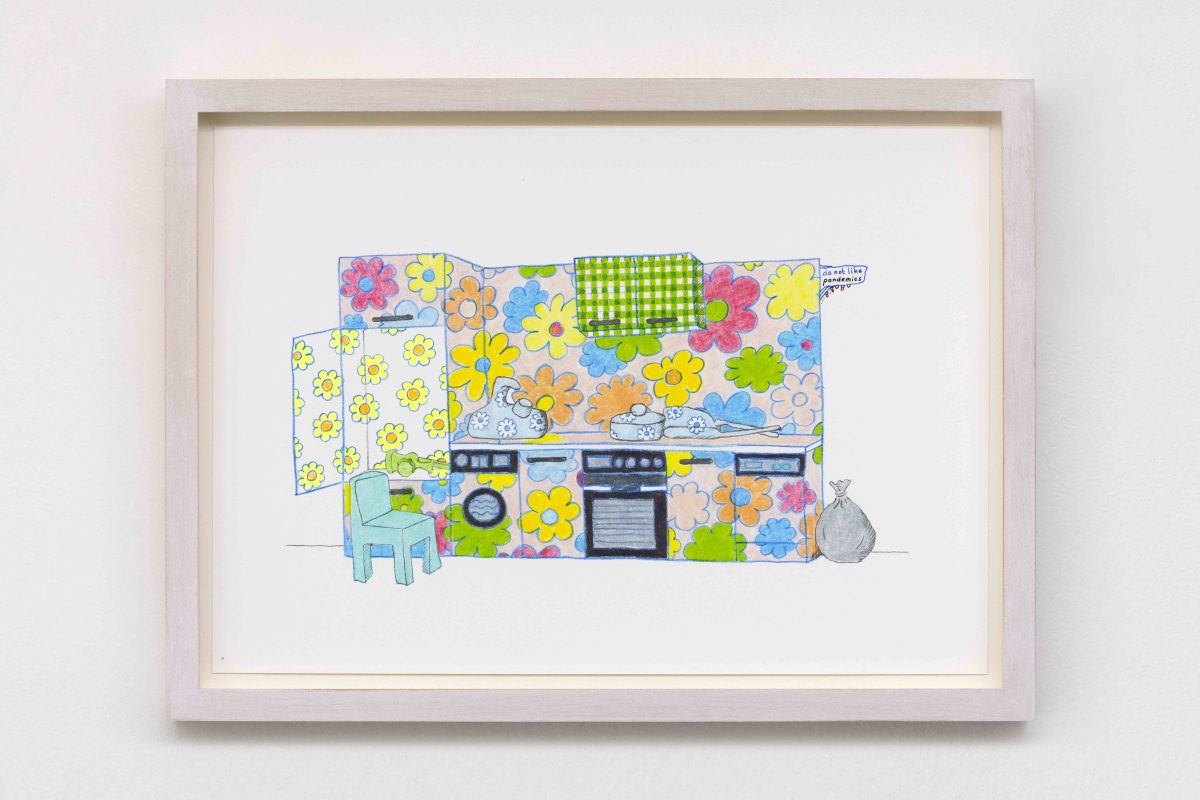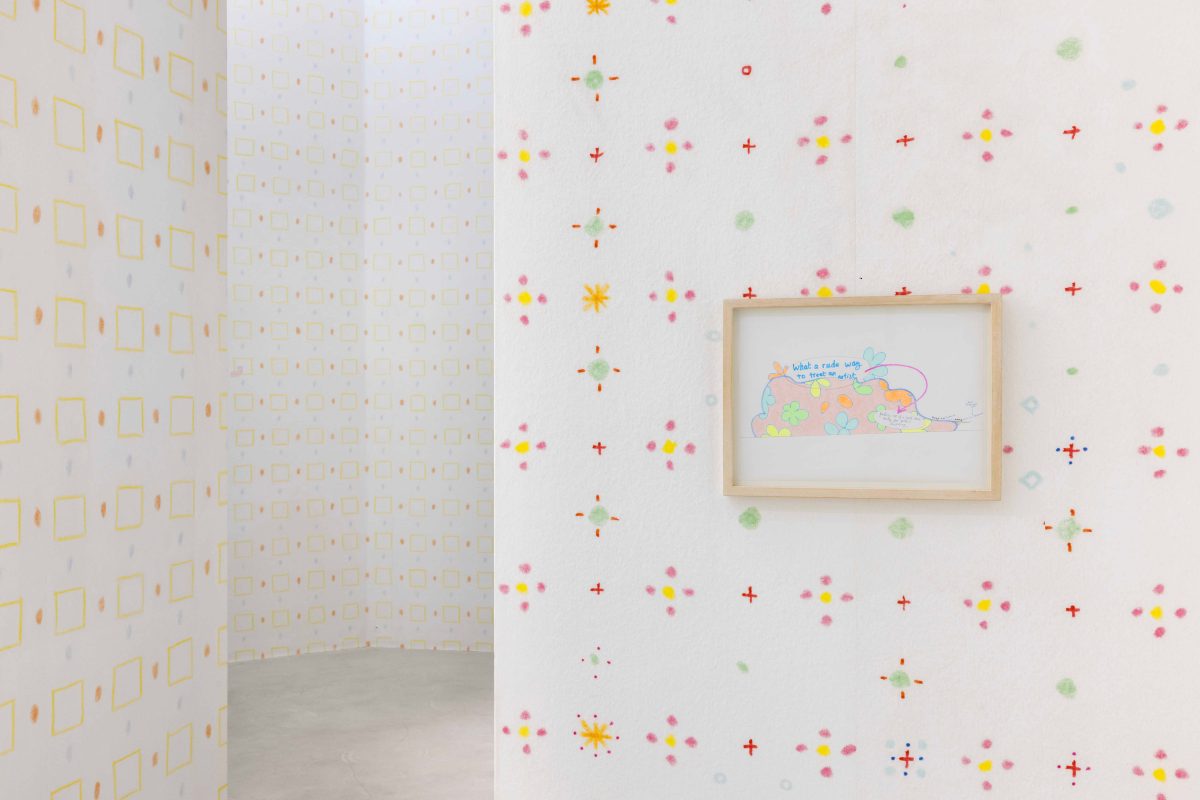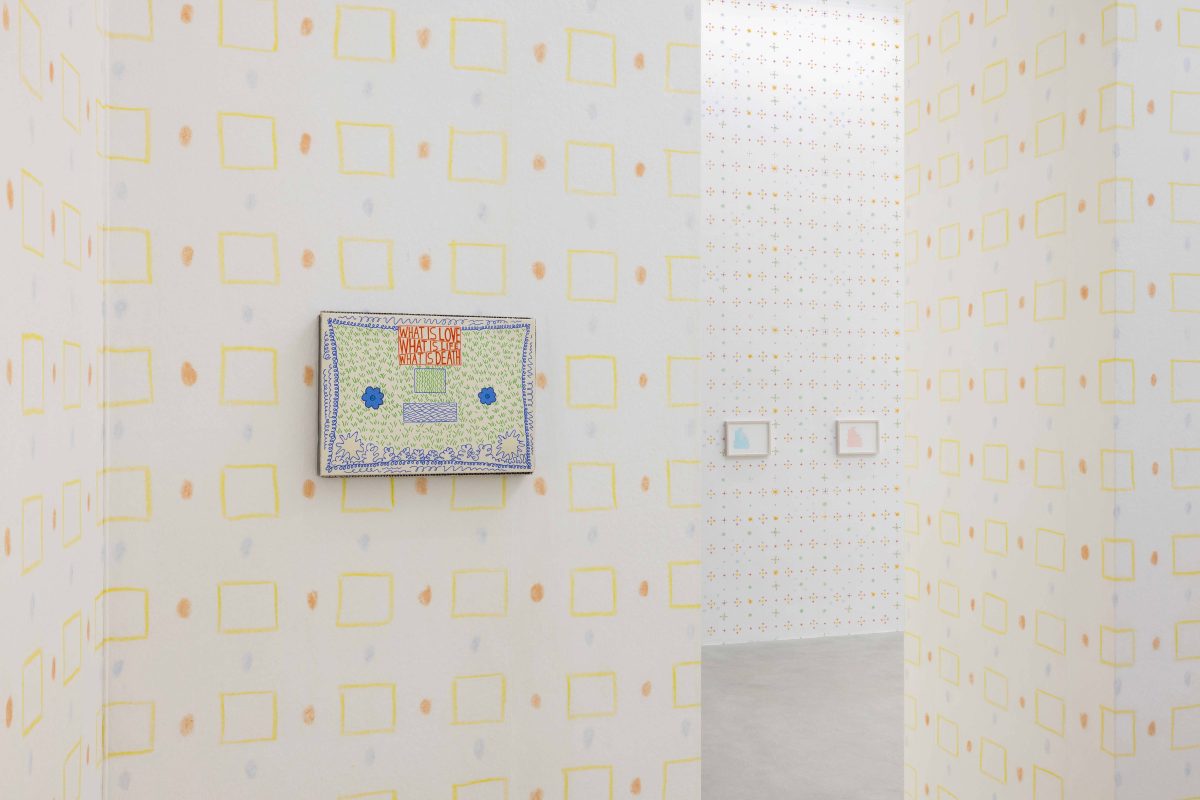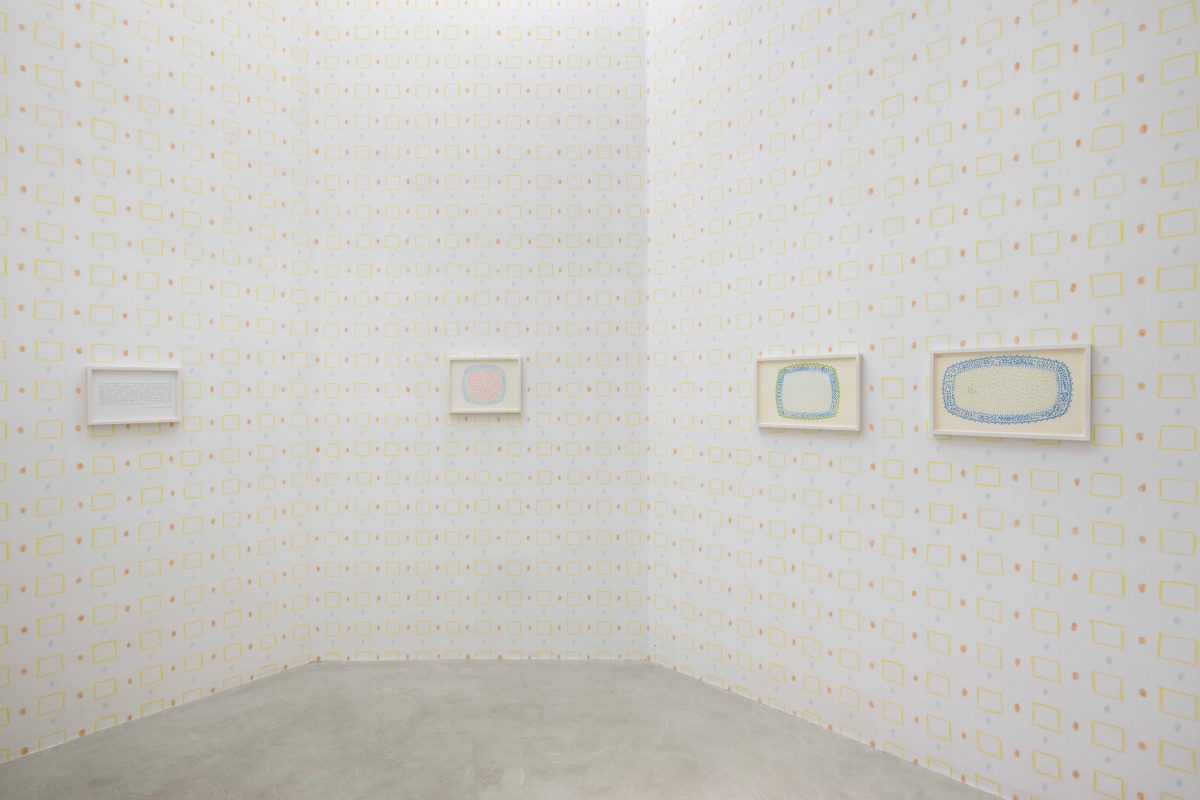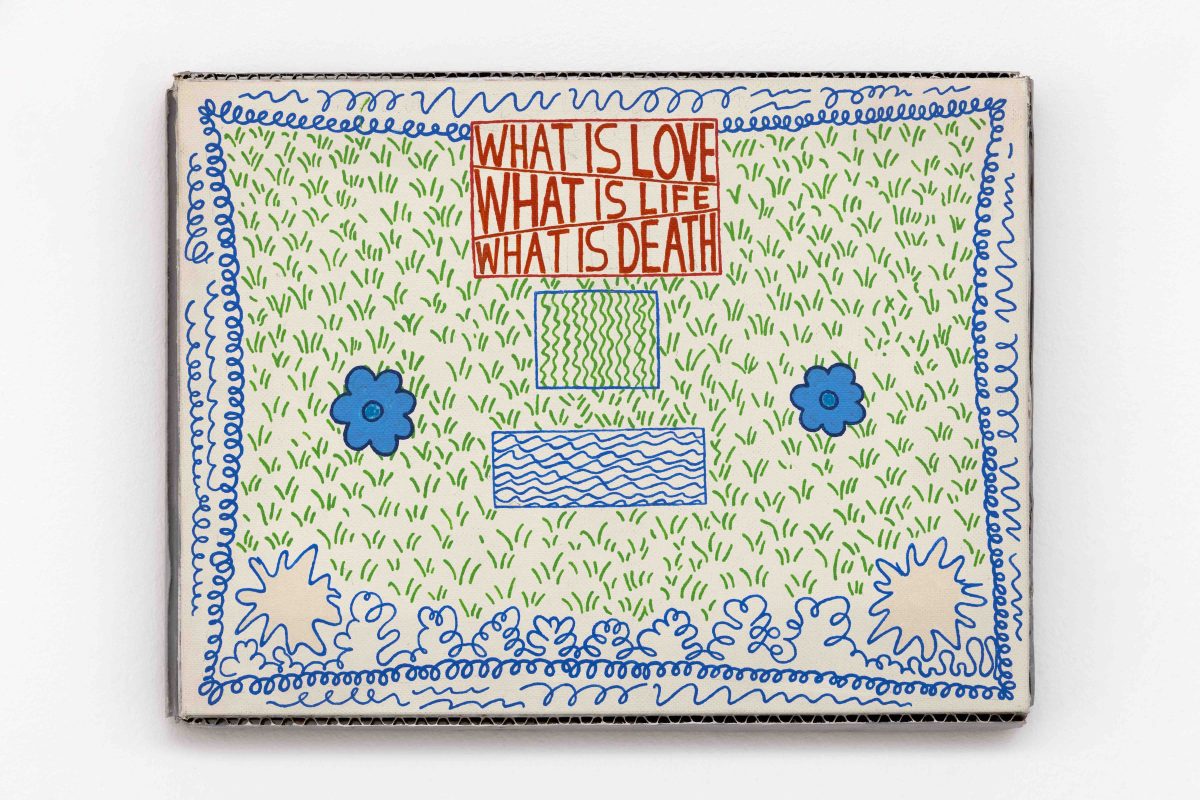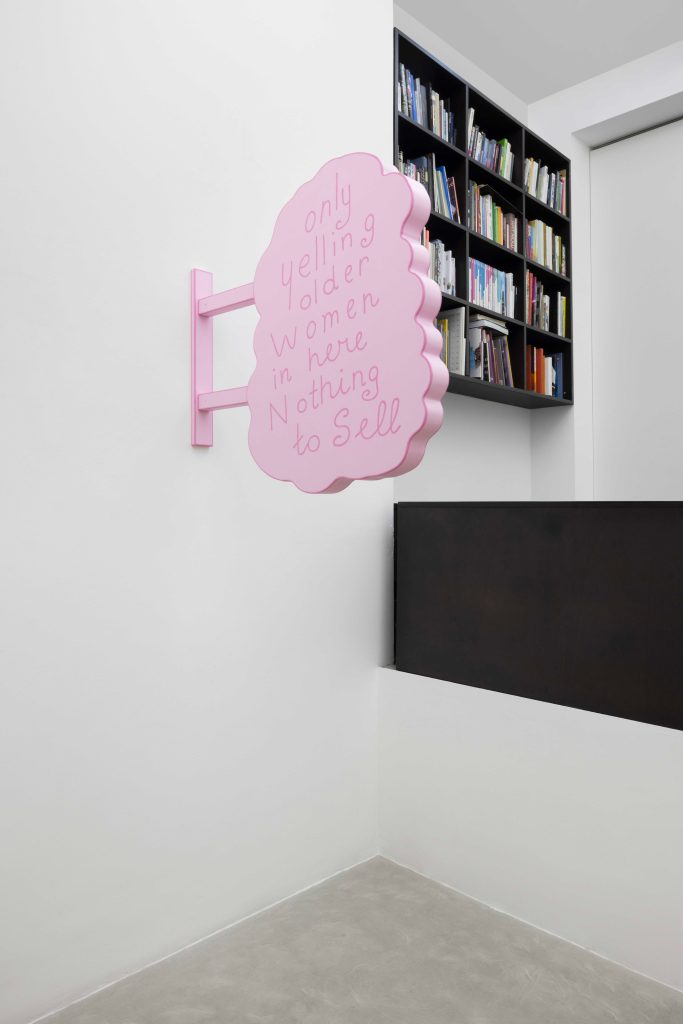
Lily van der Stokker – I am Going to Sleep Now
[ Press Release ]
[ Comunicato Stampa ]
- This event has passed.
kaufmann repetto is glad to present I Am Going To Sleep Now, Lily van der Stokker’s fifth solo show with the gallery. Featuring over 40 works spanning more than three decades, the exhibition offers an unprecedented focus on van der Stokker’s drawings, which have been at the core of her creative process since the 1980s. Her ongoing practice takes a conceptual approach, where an unheroic standard sheet of paper and a set of coloring pencils become the territory of boundless expressive possibilities, and of uninhibited artistic self-determination.
Throughout Lily van der Stokker’s oeuvre, conventional conceptions of artistic value are subverted by a playful, yet double-edged radical insistence on themes which have been routinely excluded from the realm of high culture. Stemming from her visual strategy which is generally denigrated as a taboo for ‘serious’ art – the deliberate choice of the feminal, floral and curlicued ornaments and a palette of pleasant, cheerful colors – van der Stokker addresses the banality of everyday life and domestic duties, age and healthcare, household administration and private financial matters. This wide survey of subjects unfolds before the viewer’s eye within the current presentation, where dozens of drawings executed between 1988 and 2022 are displayed throughout the gallery. They are hung upon different wallpapers, each adorned with a neat, pastel-colored geometric pattern, all based on designs which had previously been developed through drawings. While the wallpaper conveys the idea of the meticulous, and somehow despondent coziness of a petty bourgeois home, the intervention on the four-meter high walls of the gallery simultaneously alludes to the potential expansion of the artist’s practice, bringing to mind her renowned large-scale wall paintings in public spaces and institutions.
The creative tension between this monumentalized domestic setting and the predominantly small-format drawings sets the tone for the viewing experience. A vast array of clouds, sofas, kitchen furniture, flowers, amorphous coiling forms and cartoonish bubbles in soft pastel hues populate the works.
Many of the drawings include textual inscriptions which range from short slogans to more elaborate, often puzzling statements. Curt, affirmative messages seem to advertise the intrinsic value of the artwork itself, like ‘Good’, ‘For Free’, or ‘Friendly artwork’, while others externalize quirky, introspective thoughts, like ‘Oh No it is 2003’, ‘I have £25 in my pocket ’or ‘I am ugly’. Several pronouncements address the matter of aging; some are sober, factual annotations – ‘Lily is 41 Jack Is 57’ or ‘I Am 42’ – while others are complex, nearly aphoristic sentences like ‘Old people making Art that is spectacularly interesting’.
The smallest of the gallery’s rooms is entirely dedicated to the series Televisiongarden (1989), inspired by van der Stokker’s reading of texts by Italian designer Andrea Branzi, who was then part of the influential Memphis group. In response to Branzi’s prediction of a future in which mankind would no longer be part of Nature, but would only experience it through digital screens, the artist envisions a paradise confined to the oval shape of a television screen, filled with grass in various colors and a single chair to sit on.
The late 1980s also coincided with the moment in which van der Stokker established drawings as her primary means of expression and started to consider them as resolved and complete works of art in their own right. During this time she lived in the vibrant cultural scene of New York’s East Village and ran a gallery herself. She experienced the post-modern breakdown of aesthetic rules and witnessed the rise of new art forms such as graffiti, performance, experimental film, and punk music, as well as of new groups of post-conceptual artists, like Douglas Crimp’s Pictures generation and text-based work by feminist artists like Barbara Kruger and Jenny Holzer. Stimulated to define her own artistic position, van der Stokker’s perception of the four corners of a modest sheet of paper became the territory in which she could do anything she wanted: designing, fantasizing, questioning the role of the artist and the value of an artwork, dwelling on ‘forbidden’ subject matters and subvert aesthetic expectations. When wall paintings entered in her practice in the early 1990s, another layer of complexity was added to this strategy – each of her murals were (and still are) based on a drawing, which are then projected onto the wall and painted on a large scale by the artist’s assistants.
Throughout her career the van der Stokker made hundreds of drawings for wall paintings, many of them were never executed. In taking advantage of the recent pandemic lockdowns, she spent the last couple of years revisiting her own archive, by signing, titling, and dating her drawings, as well as completing and repairing older, unfinished pieces. This systematic archival inventory also confers a further momentum to the conceptual approach underlying van der Stokker’s practice, firmly establishing the drawing as a visual and communicative code, ready to be activated in various scales and on various occasions.
kaufmann repetto è lieta di presentare I Am Going to Sleep Now, la quinta personale di Lily van der Stokker con la galleria. La mostra, composta da più di quaranta opere realizzate nell’arco di oltre trent’anni, offre una prospettiva inedita sui disegni che sono al cuore del processo creativo dell’artista fin dagli anni Ottanta. Queste opere, che van der Stokker continua a realizzare, si fondano su un approccio concettuale in cui un foglio di carta e una scatola di matite colorate, oggetti non proprio eroici, si trasformano in un terreno fertile per sconfinate possibilità espressive e per una disinibita autodeterminazione artistica senza freni.
Nella produzione di Lily van der Stokker i concetti convenzionali del valore artistico vengono sovvertiti grazie all’insistenza – giocosa, ma tagliente e radicale – su tematiche in genere escluse dall’ambito della cultura “alta”. Radicando la sua strategia visiva in ciò che l’arte “seria” solitamente etichetta come tabù – scegliendo deliberatamente il tema del femminile, ornamenti floreali ricchi di ghirigori, e una palette di piacevoli tonalità –, van der Stokker esplora la banalità della vita quotidiana e delle faccende domestiche, dell’età che avanza e dell’assistenza medica, della gestione casalinga e di questioni economiche private. Un’ampia panoramica di questi temi si dipana davanti agli occhi dello spettatore, in un allestimento che presenta negli spazi della galleria decine di opere realizzate fra il 1988 e il 2022. I disegni sono appesi su carte da parati dai motivi variegati, decorate da precisi pattern geometrici in toni pastello che si ispirano a loro volta alle forme sviluppate in precedenza nei disegni stessi. Se a prima vista la carta da parati trasmette l’impressione del clima accogliente, curato eppure un po’ desolato, di una casa piccolo borghese, l’intervento sulle pareti della galleria alte quattro metri rimanda alla potenziale espansione della pratica dell’artista, evocando le sue famose pitture murali realizzate su larga scala in spazi pubblici e istituzioni.
La tensione creativa fra quest’ambientazione domestica dall’aria monumentale e i disegni di formato perlopiù ridotto detta il ritmo dell’esperienza del visitatore. Le opere sono popolate da una vasta gamma di nuvole, divani, cucine, fiori, forme amorfe e spiraleggianti, balloon da fumetti dai tenui toni pastello. Molti disegni presentano scritte testuali – spesso sconcertanti – che spaziano da brevi slogan ad affermazioni più elaborate, che spesso generano confusione. Troviamo messaggi rapidi e decisi che sembrano rimandare al valore intrinseco delle opere, come Good (“Buono/a”), For Free (“Gratis”) o Friendly Artwork (“Opera amichevole”), e altri che danno voce a pensieri introspettivi e bizzarri come Oh No it is 2003 (“Oh, no, è il 2003”), I have £25 in my pocket (“Ho 25 sterline in tasca”), I am ugly (“Sono brutto/a). Alcune dichiarazioni trattano il tema dell’invecchiamento: vanno da commenti neutri e fattuali (Lily Is 41 Jack Is 57, “Lily ha 41 anni, Jack ne ha 57” o I Am 42, “Ho 42 anni”) a frasi complesse, simili ad aforismi (Old people making Art that is spectacularly interesting, “Persone anziane che realizzano Arte interessante in modo spettacolare”). La sala più piccola è interamente dedicata alla serie Televisiongarden (1989), che van der Stokker ha realizzato ispirandosi ai testi del designer Andrea Branzi, all’epoca membro dell’influente Gruppo Memphis. In risposta alla previsione di Branzi secondo cui un giorno il genere umano, non più parte della Natura, si sarebbe limitato a osservarla attraverso schermi digitali, l’artista immagina un paradiso relegato nella forma ovale di uno schermo televisivo, invaso da erba di vari colori e con una sola sedia a ospitare lo spettatore.
È stato alla fine degli anni Ottanta che van der Stokker ha scelto i disegni come principale mezzo espressivo e ha iniziato a considerarli come opere a tutti gli effetti, indipendenti e concluse. Per tutto il decennio era stata immersa nella vivace scena culturale dell’East Village di New York gestendo una sua galleria e sperimentando da vicino il crollo postmoderno delle regole estetiche, oltre ad assistere alla nascita di nuove forme d’arte (graffiti, performance, film sperimentali, il punk) e di nuovi gruppi di artisti post-concettuali come per esempio la Pictures Generation di Douglas Crimp e le opere con testi e scritte realizzati da artiste femministe come Barbara Kruger e Jenny Holzer. Spronata a definire la propria posizione artistica, per van der Stokker i quattro angoli di un semplice foglio di carta delimitavano uno spazio in cui poteva fare ciò che voleva: disegnare e immaginare, mettere in discussione il concetto di artista e il valore di un’opera, analizzare tematiche “proibite” e sovvertire le aspettative estetiche. Quando, nei primi anni Novanta, le pitture murali si sono inserite nella sua pratica, a questa strategia si è aggiunto un ulteriore stato di complessità: ognuna di esse si fonda infatti su un disegno, proiettato sulle pareti e dipinto su larga scala dagli assistenti dell’artista.
Nel corso della sua carriera van der Stokker ha creato centinaia di disegni per opere murarie, molte delle quali non sono mai state realizzate. Negli ultimi due anni, durante i lockdown dovuti alla pandemia, ha svolto ricerche approfondite nel proprio archivio: ha firmato i disegni, ha dato loro titoli e date e ha terminato e sistemato vecchie opere incomplete. Questo inventariare sistematico offre uno slancio aggiuntivo all’approccio concettuale su cui si basa la pratica di van der Stokker, attestando il disegno come codice visivo e comunicativo, pronto per essere attivato in varie dimensioni e occasioni.

